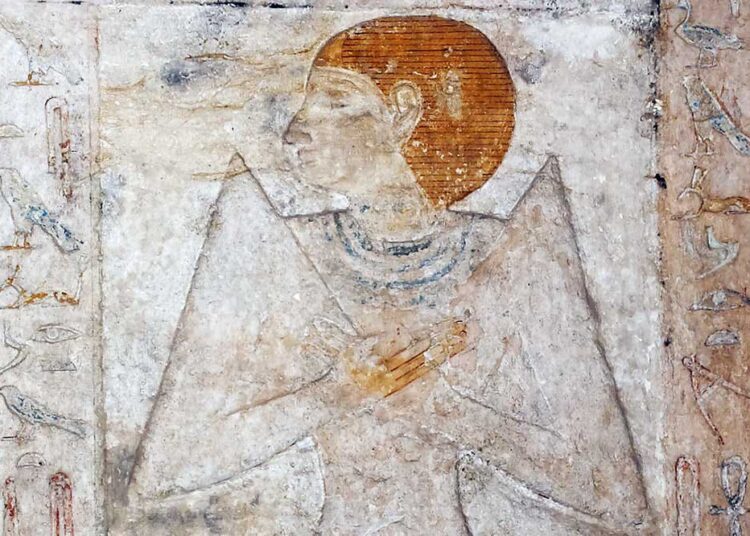And you may think the colourful and startling dresses flaunted by cinema stars and singers at special occasions are the brainchildren of the fashion designers who made them.
Please, think again and look at this: A history specialist is arguing that most of today’s fashion trends find their roots in the dress codes of the ancient Egyptians!
Strange? Perhaps. But let’s think of this: Ancient Egyptians preferred to wear clothes made of linen and these clothes had unique designs.
Egyptologist Bassem al-Shamaa says present-day designers are borrowing a leaf out of the fashion book of the ancient Egyptians and applying their dress codes to their designs.
“Ancient Egyptians had a knack for agriculture,” al-Shamaa told the Egyptian Mail in an interview. “They used to extract linen from common flax cultivated along the Nile River.”
The pharaohs turned common flax into linen cloth, even as they did not have the technologies available today.
This cloth helped them design and manufacture the finest outfits. These outfits are reemerging today, paraded by – mostly – female artists and celebrities on official occasions.
The pharaohs also managed to dye this cloth with different colours, increasing the attractiveness of the dresses they made.
They were unique, however, in that almost all the paints they used in dying their cloths were made of natural materials.
“They used plants and stones in making these paints,” al-Shamaa said.
He added that the ancient Egyptians also made artificial paints from other unnatural materials.
They used to grind stones to produce paints with different colours, including blue, red and turquoise – among others.
The pharaoh’s clothe designs were also inspired by nature. Zigzag drawings on the clothes, for example, were copied from waves in the Nile River.
Cows also gave ancient Egyptian designers inspiration with their wide eyes and strong horns.
“The pharaohs were keen on copying nature and their surroundings in everything they made, including clothes,” al-Shamaa said.
He said ancient Egyptians used to cushion themselves against cold during winter by wearing clothes made of animal skin.
“Men used to wear clothes made of leopard skin they brought from Africa,” al-Shamaa said.
Nonetheless, this was the dress of elitist people, including the king and senior priests.
Women also used to wear clothes made of panther skin. In the midseason, men and women used to wear two layers of linen.
The ancient Egyptians also had a special talent for making belts.
One of these belts is exhibited at Liverpool Museum in London. The belt, which is five meters long, is made of linen as well. It used to belong to king Ramses III.
There is belief that the belt was of a military nature, given its length. The ancient Egyptian king had probably wrapped it around his abdomen and chest to protect his body and offer him warmth.
Al-Shamaa finds strong similarities between ancient Egyptian clothes and today’s fashionable designs.
He refers to the recent discovery of a cemetery that contained 2,000 tombs in Tarkhan, around 50 kilometres south of Cairo.
The finds made in the cemetery included the upper half of a dress of an ancient Egyptian woman.
“This garment shows that the pharaohs were very civilised and fashionable,” al-Shamaa said.
The garment he refers to had a V cut from the neck and the back. It also had 58 centimetres-long sleeves. It was slim-fit.
It dates 5,000 years back, which makes it the world’s oldest woven dress.
Called Tarkhan, the dress is now on display at the UCL Petrie Museum of Egyptian Archeology in London.
“The dress’ design can be copied today for formal occasions,” al-Shamaa said.
One of the mummies found by the Great Giza Pyramids was also of a woman wearing a dress with opalite gemstone shoulders. The gemstones are cut like small pyramids. The same woman wore a choker around her neck.
The mummies of two young girls, 10 and 12, were found inside a tomb in Luxor.
The two girls wore dresses that looked like present-day jumpsuits.
“This gives up strong proof that today’s fashion finds its roots in ancient Egyptian fashion,” al-Shamaa said. “Fashion never dies.”






Discussion about this post